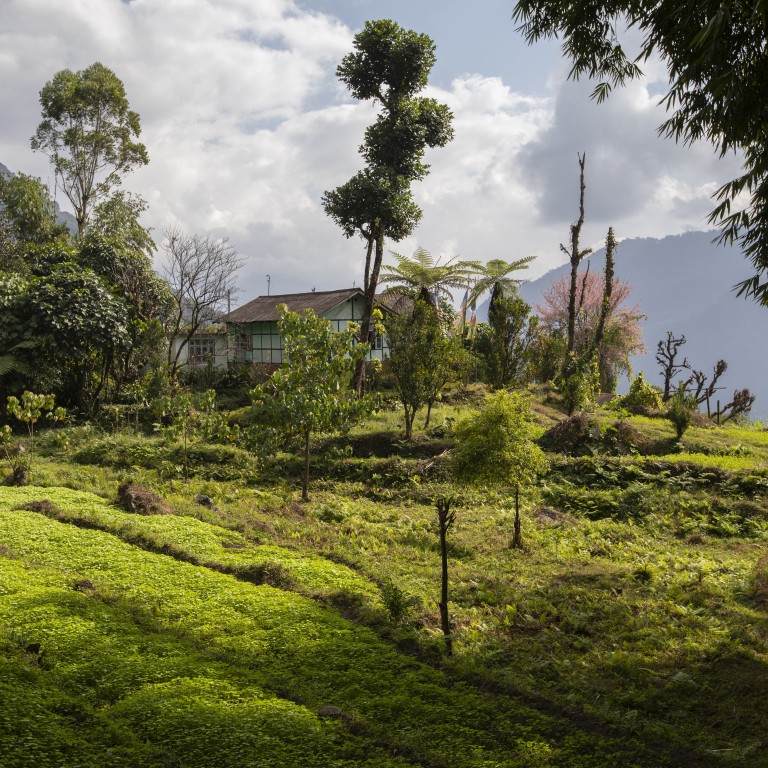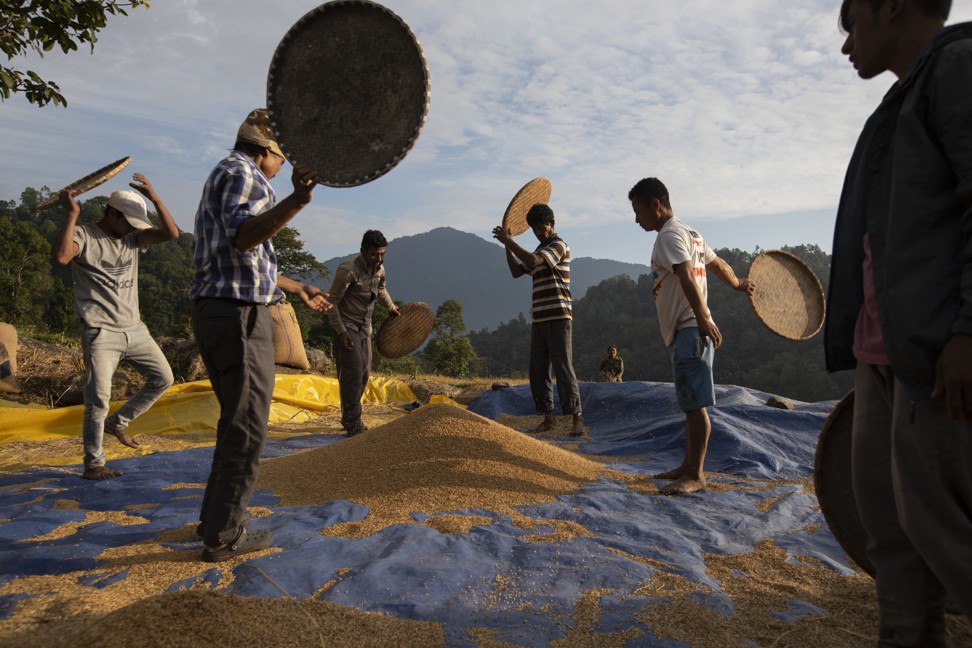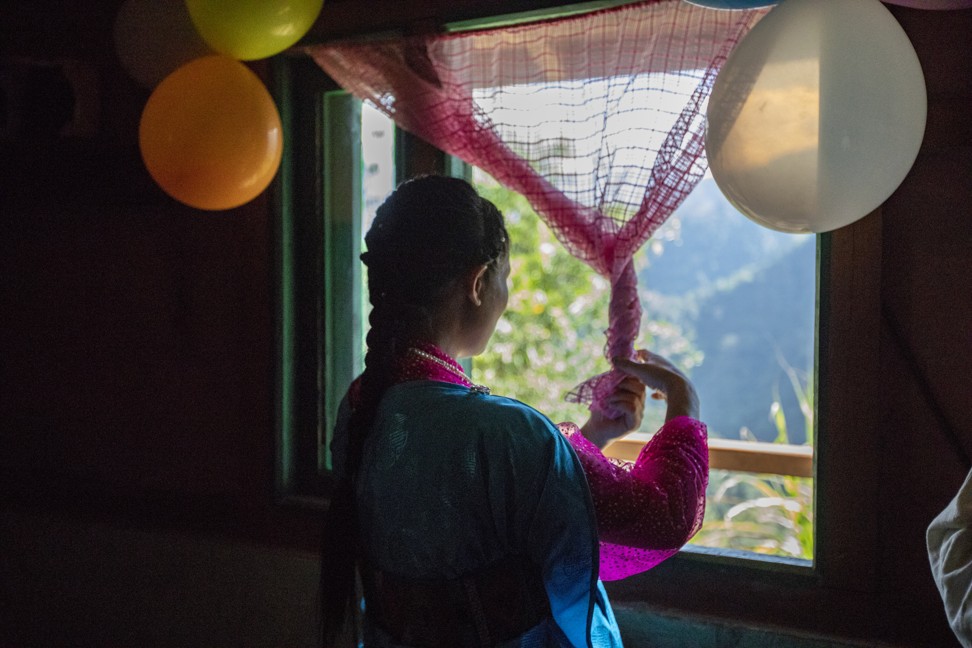
Sikkim, in India: the world’s first fully organic state might not be able to feed the planet, but its model is still pioneering
- In 2003, chemical fertilisers and pesticides were phased out in Sikkim in the Himalayas and farmers were trained in organic agriculture
- Those efforts paid off, with local authorities citing an increase in wildlife and bee populations as success
The district of Dzongu, in the Indian state of Sikkim, is slumbering in thick morning fog when the chirping of birds signals the start of a new day. The humidity slowly evaporates, exposing a blue sky and forested hills that resound with crashing waterfalls. The sun won’t rise above the steep slopes for hours; when it does, it will reveal the snow-topped silhouette of Mount Kanchenjunga, the world’s third highest peak, in all its glory.
“This mountain is sacred to all Lepchas. We believe we were created by its snow,” says Tenzing Lepcha, a 39-year-old farmer and environmental activist. “Whenever one of us dies, anywhere in the world, his soul travels back to the mountain.”
Believed to be the earliest inhabitants of this land, the Lepchas used to call it Nye-mae-el, “paradise”. The name still seems appropriate for this former independent kingdom of 610,000 people, between Nepal, Bhutan and Tibet, lorded over by Himalayan peaks.
In 2008, Tenzing felt the calling of his motherland. He left behind a promising career as a footballer in Kolkata, along with the comforts of urban life, to return to Dzongu to take up farming.

“The industrialised world has followed the path of progress, but today, even Westerners are trying to go back to their roots,” he says, sitting on the wooden porch of his home, surrounded by plots of lush green leaves and glowing mandarins.
Tenzing encouraged unemployed youngsters to take up farming and spearheaded the marketing and selling of Dzongu’s natural produce. He has become the embodiment of the alternative path the entire state has embarked on.
In 2016, Sikkim became the first fully organic state in the world, with the aim of preserving the environment, its fragile ecosystem and rich biodiversity, and providing a healthier life for its people. The declaration was the culmination of a process that started in 2003. Chemical fertilisers and pesticides were phased out, farmers were trained in organic agriculture and composting pits were dug throughout the state. Today, all 76,000 hectares of farmland in Sikkim is certified organic, and the import and use of chemicals are strictly forbidden.
With limited farmland, scattered plots and low yields, Sikkim will never be able to feed the planet, but the model it is pioneering – based on interconnection rather than competition between humankind and nature – could be the blueprint for a sustainable path as climate breakdown forces the world to redefine its priorities.
Local authorities cite an increase in wildlife and bee populations, and the revitalisation of Sikkim’s shallow, arid soil, as early successes of their organic experiment. Research by Sikkim University has found a surge in the number of butterfly species in cultivated areas, demonstrating that organic agriculture and wildlife can be mutually beneficial.
The authorities have identified four cash crops – ginger, buckwheat, turmeric and cardamom – as potential drivers of organic exports, but Sikkim lacks the infrastructure to effectively commercialise its agricultural products. Nevertheless, Dzongu’s oranges are sold as far away as Kolkata and Delhi, and according to the local government, investors from several countries have expressed an interest in its products.

The organic revolution has also stimulated a spike in tourism. Travelling in Sikkim, which became part of India in 1975, can be arduous; most roads are narrow dirt tracks carved into mountain slopes and it can take an entire day to cover 100km. But for the adventurous, the rewards are spectacular.
For a taste of the rural life beyond the sprawling capital, Gangtok, visitors can lodge in spartan rooms in village homestays. During our weeklong stay at Tenzing’s home, we follow the daily rhythms of the farm, sharing a warm cup of milk tea after hours of rice harvesting and husking, and reviving ourselves in hidden waterfalls, sacred Buddhist ponds and hot springs.
One sunny Sunday morning, Tenzing leads us on a steep, two-hour mountain hike to a jungle clearing, where dozens of wedding guests have gathered at a single-storey wood-and-brick house painted light blue and red. Girls in colourful dumdyam dresses made of silk or cotton serve food and drinks as the priest blesses the bride and groom by burning incense and ghee. Guests wait patiently to congratulate the newlyweds and give them silk scarves in a variety of shades, before exiting the house to repetitive folk songs accompanied by stringed instruments. Outside, mixed dancing circles move anticlockwise – each dancer with one arm raised and the other wrapped around their waist – and keep up the merriment until dusk.
We return in the dark to Tenzing’s homestay, where our host gathers us around the fireplace, as is his habit, to sip traditional beer served in a hollow bamboo log, topped with a few rice grains, a sign of respect for his guests. We share stories and a delicious dinner of lentil and chicken soups, rice and boiled green leaves – all organic, of course.

In 2003, Azing Lepcha, a timid, hard-working 57-year-old, inherited two hectares of farmland from his father in the village of Hatidunga. The terraces had been planted with maize since the 1970s, and the constant application of urea – a common, inexpensive nitrogen fertiliser – for more than 25 years had depleted the already poor soil. Azing started converting the land into a fruit farm, growing pineapples, guavas, bananas, mangoes, papayas and jackfruit.
“The only thing I could do was sell the fruit at the closest market,” he explains, sipping coffee in the guest area of his farm, a barren, open-air space furnished with plastic tables and chairs and overlooking the hills. “For four years, I struggled to provide for my family.”
So he started producing honey and using surplus fruit to produce non-alcoholic wine, which attracted a constant trickle of visitors. To host them, Azing opened a homestay, a stilt house consisting of three austere bedrooms, furnished with wooden sofas, and a terrace from which guests can enjoy views of the family grove and surrounding mountains. He now welcomes more than 300 customers a month and his fruit, vegetables and eggs are served at some of the best five-star hotels in Gangtok, he says.
Azing was able to send all his seven children to school and proved to his fellow farmers that the new model could work.
“Twenty per cent of my yield is still eaten by insects, birds, monkeys and wild animals, but I am perfectly OK with that,” he says. “These animals feed the forest, which, in turn, provides manure for my farm. Everything is connected in nature.”

He uses animal faeces and forest leaves as fertiliser, and a mixture of fermented cow urine and herbs as insect repellent.
After tending to his pineapple fields, Azing leads the way into a rustic kitchen, where three pots are bubbling away. Lunch is frugal but delicious; rice accompanied by beans, lentils and a green-leaf soup.
Sikkim’s villages are scattered and during the monsoon season, landslides often block its few roads, isolating entire districts for weeks at a time. Self-sufficiency has always been a necessity in such a challenging environment, and it has taught the Sikkimese to speak the language of nature.
“We don’t need markets here,” says Tenzing, laughing. “If you send me to the jungle, I know what plants to eat.”
Sikkimese farmers sow vegetables during the spring migration of the black-necked crane towards Tibet and they know the blossoming of certain flowers coincides with the trout returning upstream to lay their eggs. Listening to Tenzing list facts of nature feels like being allowed into a centuries-old secret library to admire a sacred manuscript.

For 12 years, Tenzing and fellow villagers led a fierce struggle against hydropower projects that would have changed the mountains and rivers of Dzongu forever. Some of the most vociferous farmers were beaten and thrown in jail, but the protesters eventually won.
What of the future?
Tenzing’s eyes brim with a mixture of pride and fear. “We cannot ask all our youngsters to do the same as we did. The interest has to come from them,” he says. “What we can do is show them a path that was created by our ancestors, and which my fellows and I decided to follow.”
Income from visitors interested in experiencing what the world’s first fully organic state has to offer can only help, at least once coronavirus fears have subsided and international tourists are again allowed to enter India.

